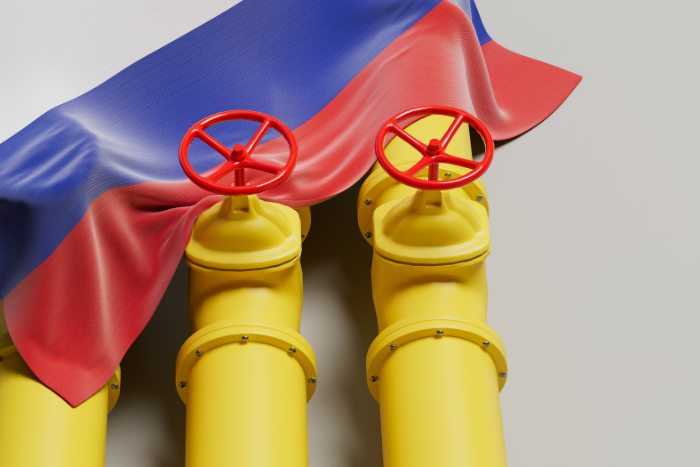Despite looking for alternatives for crude oil, China and India continued to be Russia’s top export markets for vacuum gasoil (VGO) and seaborne fuel oil this February. After the EU imposed an oil embargo, Russia moved the majority of its VGO and fuel oil to Asia. Shipments by sea to China and India rose, but those to Turkey fell. According to traders and LSEG data, China and India continued to be the leading recipients of Russian seaborne fuel oil and vacuum petrol oil (VGO) exports in February. Both nations continue to purchase the fuels to partially replace crude oil. As of February 2023, when the European Union imposed a complete embargo on Russian oil products, the majority of Russia’s fuel oil and VGO were diverted to other areas, primarily Asia.According to LSEG statistics and calculations by Reuters, direct fuel oil and VGO shipments to India from Russian ports jumped to 0.7 million metric tonnes in February 2024 from 0.46 million tonnes in January.
Coal India Limited stands third in the list of global emitters
A new analysis by a London-based think tank InfluenceMap shows that Coal India Limited ranked third in the list of global emitters. According to the data, 57 fossil fuel and cement producers worldwide are responsible for 80% of the world’s carbon dioxide emissions since the Paris Agreement, with state-owned enterprises accounting for the top three polluters. The other two top emitters during 2016-22 period are state-owned oil firm Saudi Aramco and Russia’s state-owned energy giant Gazprom. The majority of these corporations produced more fossil fuels (coal, oil, and gas) in the seven years following the Paris Agreement than in the seven years before the Agreement’s adoption, according to the analysis conducted using the Carbon Majors database. The database contains historical production statistics from 122 of the biggest fossil fuel and cement manufacturers in the world. Its investigation also revealed that 78 corporate and state producing organisations are responsible for more than 70% of the world’s CO2 emissions from cement and fossil fuels since the industrial revolution.
Coal ministry aims to monetise assets worth nearly ₹55,000 cr in FY25
The Union Ministry of Coal intends to monetize assets valued at ₹54,721 crore in FY25, which is approximately 9% more than the ₹50,118 crore goal established in FY24. The Mint stated that the ministry had monetized assets worth ₹55,148 crore in the 11 months leading up to February, exceeding its FY24 objective. According to the Ministry of Coal, the estimated goal for the FY 24–25 asset monetization strategy is ₹54,721.06 crore. Asset monetization reached ₹55,148 crore in FY 2023–24 and continued through February 2024, surpassing the ₹50,118 crore NITI Aayog Target. The ministry’s main avenues for asset monetization would be through commercial mine auctions and the development of mines using the “mining developers and operators” (MDO) model.
Lawmakers in the EU pass a bill limiting methane emissions from fossil fuel imports
Legislators in the European Union have passed a bill that would restrict the amount of methane emissions on Europe’s oil and gas imports starting in 2030. This will put pressure on foreign suppliers to stop leaking the potent greenhouse gas. Methane has a much greater warming effect in the short term than carbon dioxide and is the second-leading contributor to climate change. In order to prevent catastrophic climate change, it is imperative that methane emissions be drastically reduced this decade. Moscow, Algeria, and the United States are likely to be the main gas suppliers affected by the import regulations, which would place restrictions on “methane intensity values” for companies supplying fossil fuels into the European Union starting in 2030. In addition, the European Council must now formally ratify the law before it can be published in the EU Official Journal and go into effect 20 days later.
Global coal power increased by 2% last year, the most since 2016
According to research published by the U.S.-based Global Energy Monitor, the world’s coal-fired power capacity grew 2% last year, its highest annual increase since 2016. This growth was primarily due to new construction in China and delays in decommissioning in other countries. Nearly 70 gigawatts (GW) of new coal power capacity were put into service globally last year, including 47.4 GW in China, despite record additions from renewable energy sources. According to the report, coal-fired capacity outside of China increased for the first time since 2019, while only 21.1 GW of capacity was shut down globally. Thirty-five countries have grown their coal-fired power capacity after the Paris Agreement was signed in 2015, while 25 have decreased it.However, an additional 578 GW of coal capacity is now being developed, with 408 GW in China alone, which is sufficient to power all of India.
About The Author
You may also like
Rise in Fossil Fuel Burning is Making Floods Lethal in Asia
EU to waste billions on hydrogen pipelines in new PCI list, warns experts
Lula Pitches Fossil Fuel Phase-Out at COP30, But Can a Divided World Agree?
Fossil Fuels CO2 Emissions Hit Record in 2025 as Global Carbon Budget Nears Exhaustion
OPEC Predicts 2026 Supply-Demand Balance, Leading to Another Drop in Oil Prices

